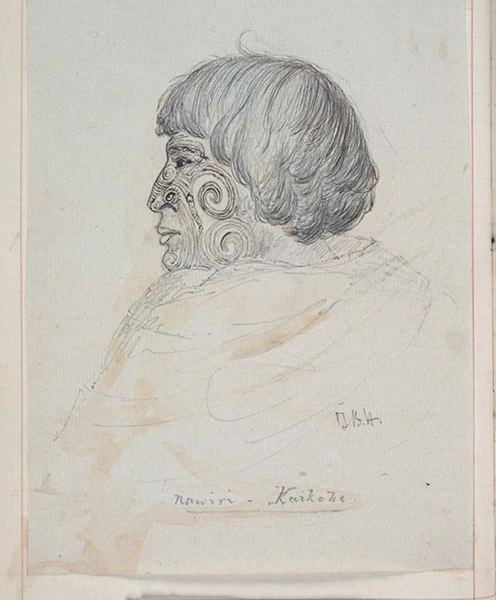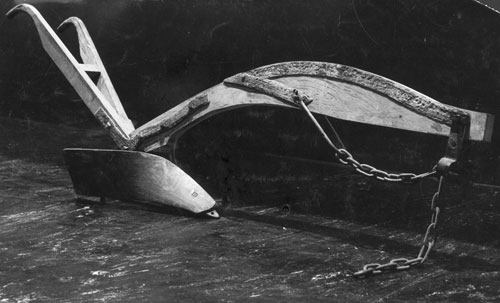RAWIRI TAIWHANGA MONUMENT
 |
|
o Rawiri Taiwhanga Recognised as the first commercial Dairy Farmer in New Zealand |
In agriculture he was the first Maori to plough, and indeed the first Maori to build himself a plough. This required the mastery of engineering skills and the working with timber. On 3 May 1820 he ploughed half an acre of ground at the Mission Station in Kerikeri. Rawiri was John Butler’s foreman and the plough was first used in New Zealand to plough land at the Kerikeri Church Missionary Society mission station in 1820.
Rawiri mastered the horticultural skills of growing such exotic plants as hops and strawberries, of ornamental roses.
Being foreman at the Mission house Taiwhanga had the opportunity to handle domestic animals. By 1827 a herd, estimated at about 100, of cattle grazed at the Mission Station. When Taiwhanga moved to Kaikohe in about 1834 he acquired enough cattle, Durham shorthorns most probably, to start his own dairy herd.
Taiwhanga grew maize and wheat, and may even have had a hand for grinding his wheat. It is probable that Rawiri Taiwhanga’s household was the first one to bake bread and to welcome European guests with milk to drink abd bread and butter to eat.
Taiwhanga is reported by Rev Williams to have taken part in ten engagements in the numerous military expeditions of the Ngapuhi in the first quarter of the nineteenth century.
In August 1829 four of Taiwhanga’s children were baptised. In February 1830 Taiwhanga was baptised and took the name David, Rawiri. For 25 years from 1821 to 1845 Rawiri Taiwhanga was perceived as a leader in the Bay of Islands in the mastery of skills of Western civilisation. After 1845 we hear little more about his activities, probably because he was no longer in contact with European observers.

He is known to have established a school in Kaikohe, which his son, Hirini, took over until in 1887 Hirini, became the Member of the House of Representatives for the Northern Maori.
Rawiri Taiwhanga, according to John Butler’s journal entry of 27 July 1821 states:
“This man, Taiwhanga is now, and has been ever since our arrival in New Zealand, the most active and zealous among all the New Zealanders is assisting and working for the Europeans. If any New Zealand deserved a present from the Society he is certainly the man. I engaged him soon after our arrival, and he never left us, but has been continually with us, and he has faithfully laboured and endeavoured to forward our objects to the best of his power. He is much respected by all the Europeans on account of his good temper and general attachment. He is a man of quick discernment, and learns everything very fast. Agriculture, such as breaking up land, burning off, laying it out, trenching etc, he is particularly fond of, and possesses great knowledge for the time he has been in farming in general. He can reap, mow and thresh, etc. I began to learn him to sow, dibble, and drill grain this seed time, and ere these lines reach you, D.V., I have no doubt but that he will be a complete farmer..”
“He possesses also a tolerable knowledge of gardening such as forming beds, sowing small seeds, setting out our plants, drilling peas, beans, planting potatoes, dressing strawberry beds, etc, etc. Indeed he has been my right hand man both in the field and in the garden; he has not only wrought himself but has been the means of bringing his friends and acquaintances into the field to labour.”
“ All Europeans that have visited the settlement have expressed their surprise at seeing so much farming, gardening, and fencing, which have been done in so short a time and under such peculiar circumstances, but this man has acted like a flywheel in the machine, which outs every other cog in motion.”
“Likewise in the felling of timber, or towing the same to the settlement for the building department, he stands the very first.”
Rawiri Taiwhanga was successful in his attempts to learn European ways and profited by them. He lived in changing times but his industry, courage and intelligence helped him to adjust, and to take advantage of new ideas and of the technology of the times.
His fame as a warrior still lives in histories of the times. The journals and letters of the missionaries also tell of his study and work as a Christian.
